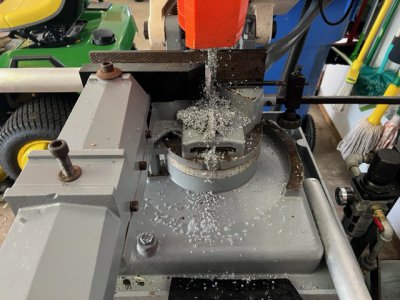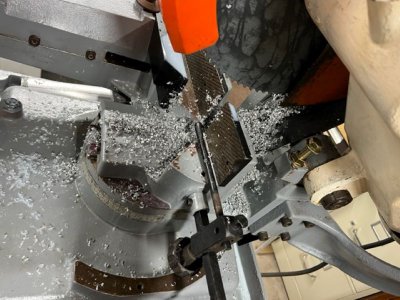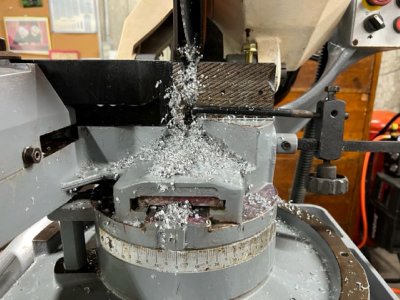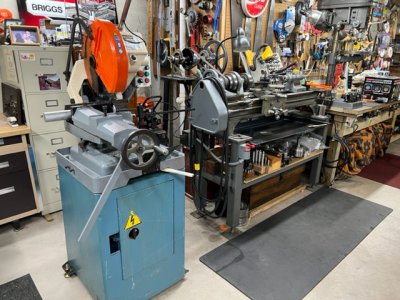Mine is about the same. It's a variable speed machine with infinitely variable speeds from 21 rpm to 120 rpm. The blade doesn't turn fast enough to throw swarf, but if the coolant flow isn't right on the money it will pile up. Here are a few pictures I took when dialing in the machine. If I recall correctly the material was 2" 6061 aluminum round stock. The pictures are after cutting half a dozen slugs for measuring. The last picture is after I vacuumed off the machine, but no cleanup on the floor.
As you can see there is a pile of swarf on the machine, but little or none on the floor or surrounding area. I was able to get the slugs to within .001" of straight and parallel with just the right blade speed and down force. I wouldn't plan on getting them that close in a production situation, but .002" is certainly doable without too much effort.




